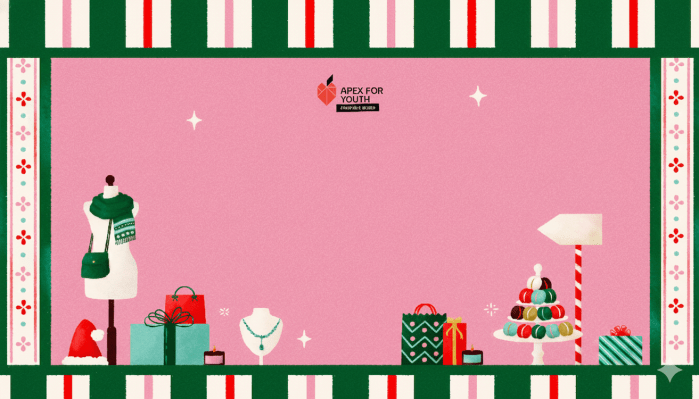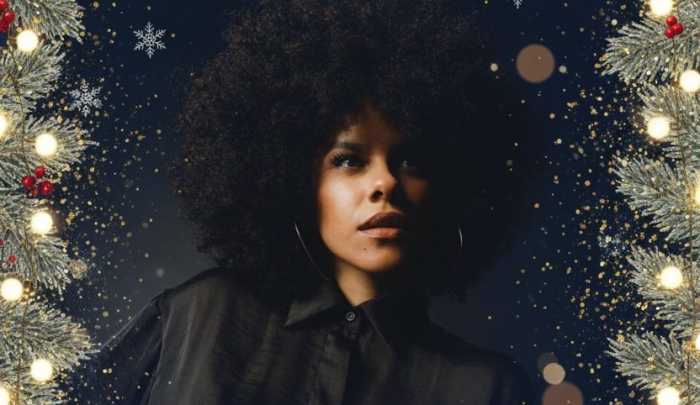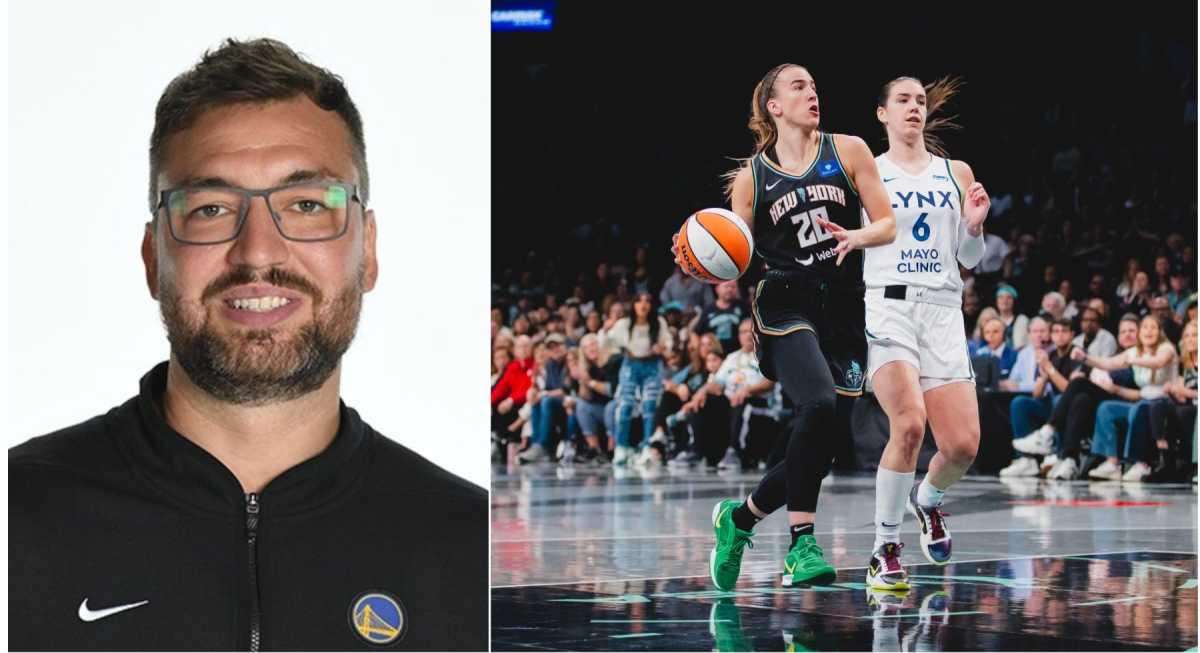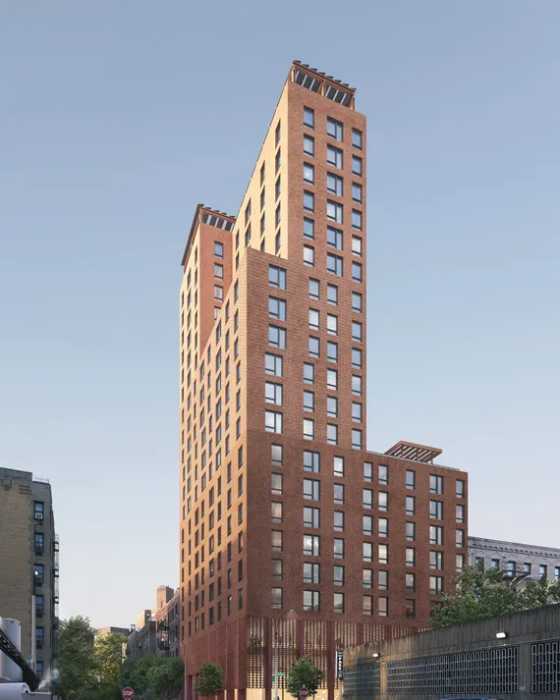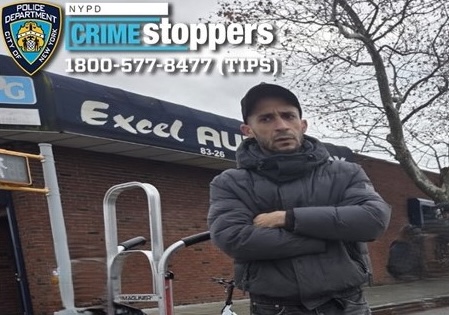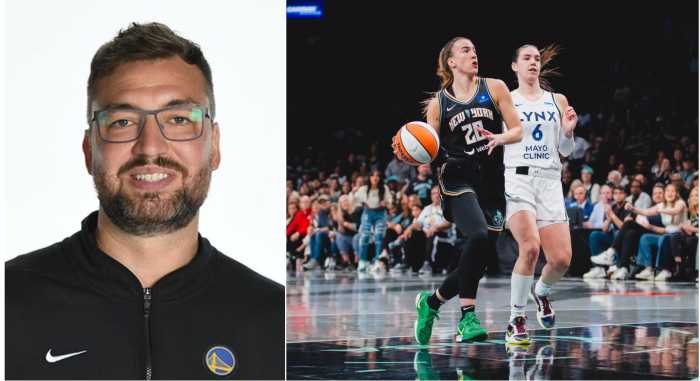The Department of Transportation unveiled on Friday a new piece of public art on Malcolm X Boulevard and 124th Street — “Aunties” by Harlem-based artist Fitgi Saint-Louis in collaboration with the West Harlem Art Fund.
The artwork, which includes the figures of three women composed of multicolored pieces of wood in a triangle formation, will remain on display for about a year. DOT Commissioner Ydanis Rodriguez celebrated the installation at a Friday morning ceremony with Saint-Louis, Deputy Manhattan Borough President Keisha Sutton-James, West Harlem Art Fund Director Savona Bailey-McClain, and housing advocate June Moses.
“‘Aunties’ really is a celebration of women in Harlem, the collective that comes together from this beautiful diaspora of people from the Caribbean to the African continent from the South and the West, everyone really comes together here, and that’s a vibrant, luminescent spirit,” Saint-Louis told amNewYork. “That’s what I wanted to capture between the colors that I used, and also the form.”
The opportunity to create a piece of art in Harlem was particularly special for Saint-Louis, who was born in Long Island and now lives in Harlem. She noted how the storied artistic history of Harlem inspired her design.
“When I saw the open call for the DOT community commissions, I was like, ‘I have to apply,'” Saint-Louis said. “One of the sites was here, in my own neighborhood.”
Rodriguez spoke of the city’s commitment to public, accessible art.
“Art cannot be only exclusive,” Rodriguez said. “It is time that we support all the grassroot artists in our community to have the strength and support that they need. And what better place for us to use what we have, our public spaces.”
Rodriguez discussed the abundance of art museums in New York City, including the Museum of Modern Art and the MET. In order for New York to prioritize public art, Rodriguez said, the city needs to “bring the museum … to the community.”
Sutton-James said she was grateful for the generational celebration of women and family that the piece brings to Harlem.
“We are celebrating this work, celebrating the work of our artists and of art coming to public spaces so that everyone can experience the joy, liberation, spiritual elevation, seeing themselves, seeing their children, seeing their ancestors in their own art,” Sutton-James said.
Moses discussed meeting Bailey-McClain two years ago and bonding over a shared passion for public art.
“We’ve been riding with this project from day one because we understand the importance of being able to walk outside our doors, even though inside might be a hot mess, when we walk outside and we see beauty, it helps us to bring back in the positive to make our inside home better,” Moses said. “Here in Harlem, there have been aunties that have held this communities up through heroin, through crack, through all of the epidemics, that invisible hand of the aunty.”
Moses said that though she is not a mother, she understands what it is to be an aunty.
“Fitgi Saint-Louis made a piece that spoke to me and all of us invisible aunties that you may not see us, but we do the work every day to uphold community,” Moses said.
Bailey-McClain discussed Harlem’s artistic history, including the Harlem Renaissance and the Black Art Movement, and the path to making “Aunties” a reality.
“We’re having another movement, a public art movement,” Bailey-McClain said. “I don’t care what they may say right now during this political movement, this moment, we are making a difference.”
Saint-Louis thanked her family and supporters and discussed the value of public art.
“The piece that I created has three figures, they’re each individuals and unique people in their own right,” Saint-Louis said. “We’re really trying to honor the different eras of women, specifically the women that are here in Harlem that came from so many different places.”












